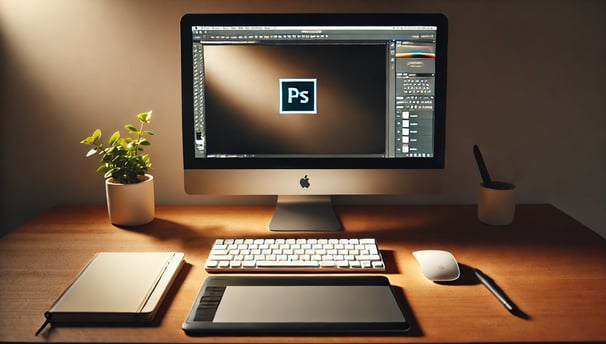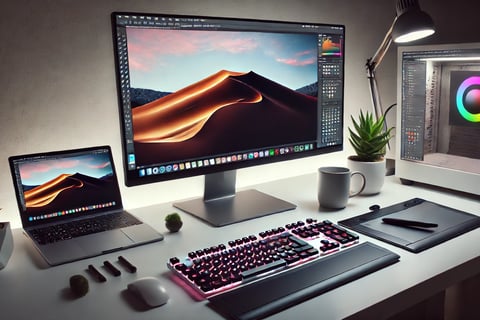Selection Secrets: Mastering Photoshop’s Best Shortcuts for Precise Editing
Selection Secrets: Mastering Photoshop’s Best Shortcuts for Precise Editing . When I first started using Photoshop, making precise selections felt like the most time-consuming part of my workflow. I used to rely heavily on the mouse, manually tracing edges and tweaking selections for what felt like forever
3/11/20253 min read


When I first started using Photoshop, making precise selections felt like the most time-consuming part of my workflow. I used to rely heavily on the mouse, manually tracing edges and tweaking selections for what felt like forever. But as I explored Photoshop more deeply, I realized that the real magic of selections lies in mastering keyboard shortcuts. These shortcuts have transformed the way I work, making everything faster, more efficient, and way more precise.
One of the most essential shortcuts for selections is Ctrl + A (Command + A on Mac), which selects the entire canvas. It’s something I use all the time when I need to apply adjustments to the whole image. But sometimes, I only want to work on a specific area, and that’s where Ctrl + D (Command + D on Mac) becomes my best friend—it quickly deselects any active selection, letting me start fresh without hassle.
When working on complex images, the Marquee tools are indispensable. By pressing M, I can quickly switch between the Rectangular and Elliptical Marquee tools. Holding Shift while making a selection keeps proportions constrained, which is perfect for selecting square or circular elements with precision. If I ever need to move my selection while still dragging, holding Spacebar allows me to adjust it on the go.
For more refined selections, the Lasso tool (L) is an absolute game-changer. I can switch between the standard Lasso, the Polygonal Lasso (hold Alt/Option to toggle), and the Magnetic Lasso just by cycling through with Shift + L. The Magnetic Lasso is especially handy when working with high-contrast edges because it automatically snaps to the object, saving me from tedious manual tracing.
I often find myself needing to add or subtract from a selection, and this is where keyboard modifiers make all the difference. Holding Shift while using any selection tool adds to the current selection, while holding Alt (Option on Mac) subtracts from it. When I need ultra-precise selections, Ctrl + Shift + I (Command + Shift + I on Mac) allows me to invert the selection instantly. This is particularly useful when I select a background but need to work on the subject instead.
Refining edges is another crucial step in creating high-quality selections. Pressing Ctrl + Alt + R (Command + Option + R on Mac) brings up the Select and Mask workspace, allowing me to fine-tune edges without manually painting on layer masks. This shortcut has been a lifesaver when working with hair, fur, or any object with intricate edges.
The Quick Selection Tool (W) and Magic Wand (Shift + W to toggle) are also essential when I need to select objects quickly based on color and contrast. While the Magic Wand is great for high-contrast images, the Quick Selection Tool lets me paint over areas I want to include, making it more versatile for natural selections.


Sometimes, I need to transform a selection, and instead of going through the menus, I simply press Ctrl + T (Command + T on Mac) to enter Free Transform mode. If I only want to transform my selection rather than the image itself, Ctrl + Shift + T (Command + Shift + T) comes in handy. Holding Shift while dragging keeps proportions locked, while Alt (Option) allows me to scale from the center.
Feathering a selection is another essential technique I use, especially when blending elements into a composition. Instead of navigating through menus, I press Shift + F6 to bring up the Feather Selection dialog box. A slight feather (usually between 2-5 pixels) helps blend selections seamlessly without harsh edges.
One of my favorite shortcuts is Ctrl + J (Command + J on Mac), which duplicates a selection onto a new layer. This is incredibly useful for non-destructive editing. If I want to cut the selection instead of copying it, Shift + Ctrl + J (Shift + Command + J) does the trick.
Mastering these selection shortcuts has completely changed the way I work in Photoshop. No more struggling with the mouse, no more endless clicking through menus—just smooth, efficient editing that makes my workflow faster and more enjoyable. If you haven't incorporated these shortcuts into your process yet, give them a try. I promise, once you do, there’s no going back!
mr.Udit kumar
info@worldbesthub.com
+91-8920162717
Contact Us
Keyboard Basics & Functions
Keyboard Shortcuts & Productivity
Gaming Keyboards & Features
